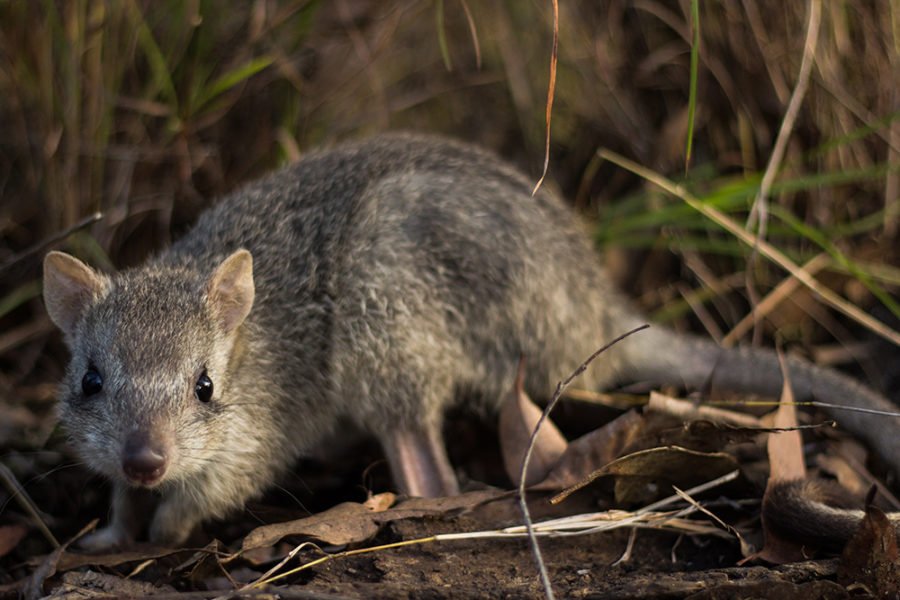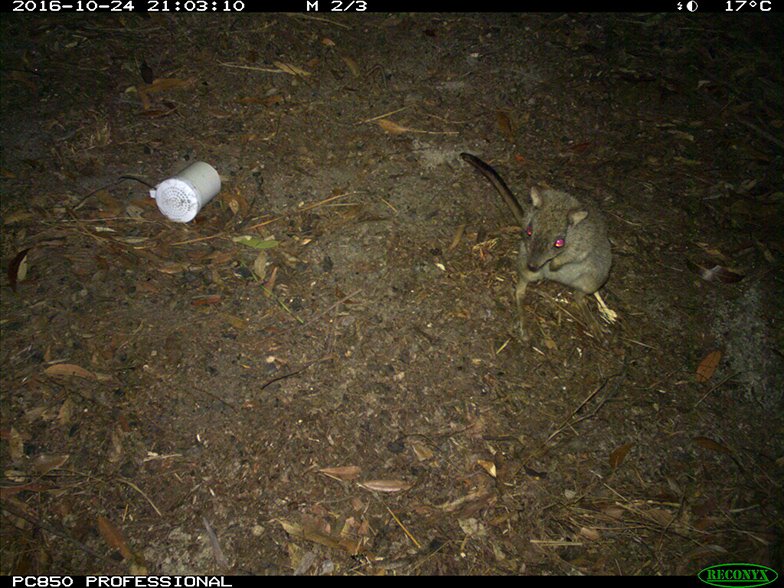Northern bettongs rediscovered in ‘eureka’ moment

THE OUTLOOK FOR one of Australia’s rarest marsupials is a little less dire, with the second-known population of northern bettongs recently discovered in far-north Queensland.
For more than a decade, the only known location of northern bettongs (Bettongia tropica) was in Lambs Range near Cairns. It was feared these were the only survivors of the species in the wild, after 20-30 years of dramatic decline due to threats including habitat loss and invasive predators.
However, sensor cameras set up in Mount Lewis National Park, north-west of Port Douglas, have now photographed at least three of the endangered marsupials, revealing a second population hanging on in the northern end of their historic range.
“After searching for a year and a half, and walking for hundreds of kilometres in rugged bush, this was our eureka moment,” said WWF-Australia’s Jess Koleck, coordinator of the Northern Bettong Project.
“It means we don’t have all our eggs in one basket. If a major fire or disease outbreak greatly reduced the Lamb Range population, there are at least some survivors to the north. The situation just got slightly less dire,” she said.

Northern bettong caught on sensor camera in Mount Lewis National Park (near Mount Carbine in Queensland’s far north) in the northern region of their historical range. (Image: WWF-Australia)
The Northern Bettong Project is a collaboration between WWF, James Cook University and the Queensland Government, working with Indigenous groups and the local community.
The three organisations placed more than 100 sensor cameras in the field in their search for the northern bettong. The cameras were placed about 1km apart in rows 5km long, and left in place for a month, alongside bait balls made of peanut butter, oats, vanilla and truffle oil.
During that period, more than 100,000 photographs were taken, capturing not only the elusive northern bettongs, but also spotted-tailed quolls, bandicoots and possums.
“Looking through a mountain of images has been a slow and tedious process. But we were all celebrating when there on the screen were northern bettongs from three different camera points,” said Jess.
“With only about half the photos sorted from this site, we’re hopeful of finding more. But it seems likely their range up in the north is pretty small,” she added.
Bettongs’ traditional habitat is open eucalypt woodland, just west of the rainforests of north Queensland. Scientists believe the species plays a crucial role in the health of the woodland ecosystem.
READ MORE:
- The adorable marsupial surviving against the odds
- Back from the dead: Gilbert’s potoroo
- Australian endangered species list

